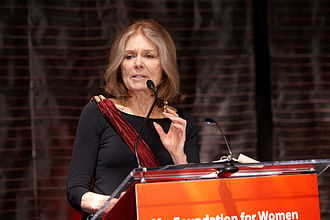A few times every year I get a phone call from a non-profit friend who is experiencing a cash flow issue. The conversation always starts off with a tinge of embarrassment and then quickly morphs into finger pointing and finally ends with a sense of resignation and desperation. I received another one of these phone calls the other day, which reminded me that I’ve been meaning to blog about this subject for quiet some time. The following are a few quick tips on how to handle your non-profit organization’s cash flow crisis.
Remain calm and confident
 One of my favorite movie scenes is at the end of Animal House when Kevin Bacon’s character is trying to keep the peace in the middle of the parade-turned-riot when he is shouting, “Remain calm! All is well.”
One of my favorite movie scenes is at the end of Animal House when Kevin Bacon’s character is trying to keep the peace in the middle of the parade-turned-riot when he is shouting, “Remain calm! All is well.”
During a cash flow crunch, it is important for you to remain calm and encourage everyone else in the organization (e.g. board volunteers, staff, donors, etc) to do the same.
Why? Simply because . . .
- People don’t follow leaders who aren’t confident and composed
- Panic and fear spread quicker than the flu
- People don’t typically make good decisions when they are panicked and fearful
Develop a 90 day plan
 You have lots of short-term options that will help bridge your organization through a cash flow crisis. The following is a short list of some of those options:
You have lots of short-term options that will help bridge your organization through a cash flow crisis. The following is a short list of some of those options:
- Secure a loan (this can be a traditional short-term loan from the bank or a promissory note from a donor)
- Search your donor database for LYBUNTs (e.g. lapsed, former donors) and ask them to renew their support
- Meet with your largest donors and ask them to make another contribution
- Look at your accounts receivable list and ask those donors if they would consider making a pledge payment sooner than they had indicated on their pledge card
- Ask board members to make another contribution
- Prioritize which outstanding invoices need to be paid now and which ones can wait
- Work with your Finance Committee (or key board volunteers) to develop a new budget plan for your new realities (or develop multiple budgets for a variety of revenue scenarios)
- Use unpaid furlough days with some staff to temporarily reduce payroll expenses (be cognizant of what this will do to morale and possible employee turnover)
I wrote a blog post titled “So, your non-profit cannot make its payroll obligation” a few years ago about some of these options. You might want to click-through to read more.
Understand what caused the problem
 If I’ve seen it once, I’ve seen it a number of times . . . board volunteers want to hold someone accountable after the crisis passes. In my opinion, the best way to survive this dynamic is to be able to point to:
If I’ve seen it once, I’ve seen it a number of times . . . board volunteers want to hold someone accountable after the crisis passes. In my opinion, the best way to survive this dynamic is to be able to point to:
- Your calm leadership during the crisis
- Your role in developing the short-term plan
- Your understanding of what caused the problem
- Your commitment to fixing the things that cause the problem
There is a fine line between assessment and finger pointing in these situations. Whatever you do, avoid finger pointing because your board of directors will interpret it as “not taking responsibility“.
There isn’t a right or wrong way to undertake an assessment, but my suggestion is that you do it with many people sitting around the table. The more eyes you have looking at this situation, the more likely you will be to see all sides of the problem. Consider involving staff who play some role in financial management, board volunteers with a background in finance, and possibly even an external consultant who can come at this with fresh eyes.
Develop a long-term plan
 Now that you’ve made it through the crisis and have a firm understanding of what caused it, it is important have a new long-term plan that keeps you from ending up back from where you just came.
Now that you’ve made it through the crisis and have a firm understanding of what caused it, it is important have a new long-term plan that keeps you from ending up back from where you just came.
As with the last section, I strongly suggest you don’t do this alone. Your plan will have more credibility if many participated in its creation. Remember, the board will look skeptically at any plan that is developed by the same people who they perceive as having played a role in creating the original crisis. Involving fresh faces with lots of credibility helps address this dynamic.
Your plan will be unique to your organization and your situation; however, the following are just a few “fixes” I’ve personally seen embraced more often than not:
- Making revisions to the resource development plan (e.g. adding more to the fundraising plan)
- Making process changes to the budget construction process
- Making process changes to billing/invoicing donors and grant providers
- Changing how the board monitors/oversees the finances
- Undertaking a re-organization of the company focused on staff/payroll reduction
Well, good luck with your cash flow crisis. Hopefully, these big picture suggestions are helpful and get you pointed in the right direction. If you have any ideas or experiences that you wish to share, please do so in the comment box below. We can all learn from each other.
Here’s to your health!
Erik Anderson
Founder & President, The Healthy Non-Profit LLC
www.thehealthynonprofit.com
erik@thehealthynonprofit.com
http://twitter.com/#!/eanderson847
http://www.facebook.com/eanderson847
http://www.linkedin.com/in/erikanderson847

 I assume most of you heard about the boycott that had been organized within the artistic community to this past weekend’s Academy Awards event. In a nutshell, it was because for the second year in a row the nominations lack diversity. If you’ve been busy running your non-profit organization and living in a cave, then I suggest clicking through to read an US Magazine article titled “
I assume most of you heard about the boycott that had been organized within the artistic community to this past weekend’s Academy Awards event. In a nutshell, it was because for the second year in a row the nominations lack diversity. If you’ve been busy running your non-profit organization and living in a cave, then I suggest clicking through to read an US Magazine article titled “ So, how does this apply to your non-profit boardroom?
So, how does this apply to your non-profit boardroom? The diverse group of faces sitting around your board development committee table need to have a good grasp of the following:
The diverse group of faces sitting around your board development committee table need to have a good grasp of the following: Your nonprofit is constantly trying to improve. Whether you’re developing an efficiency hack for your staff members or trying new fundraising events, openness to change is what allows your organization to grow, acquire more donors, and raise more money for your cause.
Your nonprofit is constantly trying to improve. Whether you’re developing an efficiency hack for your staff members or trying new fundraising events, openness to change is what allows your organization to grow, acquire more donors, and raise more money for your cause. Abby Jarvis is a blogger, marketer, and communications coordinator for
Abby Jarvis is a blogger, marketer, and communications coordinator for  Well, it happened to me and my husband again just the other day. We were asked to dinner by a non-profit friend. It was a simple dinner invitation, and one that we’ve been working on setting up for more than a year. We weren’t in the restaurant for more than 15 minutes and the pre-meal cocktails had just arrived, when our friend was asking us to give some consideration to making a contribution to their organization’s endowment fund.
Well, it happened to me and my husband again just the other day. We were asked to dinner by a non-profit friend. It was a simple dinner invitation, and one that we’ve been working on setting up for more than a year. We weren’t in the restaurant for more than 15 minutes and the pre-meal cocktails had just arrived, when our friend was asking us to give some consideration to making a contribution to their organization’s endowment fund. Simply, I believe soliciting unsuspecting prospects and donors is detrimental to your organization (and to everyone else in non-profit sector) for the following reasons:
Simply, I believe soliciting unsuspecting prospects and donors is detrimental to your organization (and to everyone else in non-profit sector) for the following reasons: In an effort to do may part to help eradicate the “ambush” tactic from our non-profit toolbox, I will share with you some of the tips from this video.
In an effort to do may part to help eradicate the “ambush” tactic from our non-profit toolbox, I will share with you some of the tips from this video. It was a bleary-eyed late night dash in a rental car to position myself for a morning meeting, and I was listening to National Public Radio (NPR) in an effort to stay awake. At one point, someone was interviewing iconic feminist leader Gloria Steinem. While I cannot remember the big reason for the interview (e.g. new book, rally, election analysis, court ruling, etc), there was one thing that stuck with me, and I just had to share with you because I think it is a great allegory for how your non-profit should interact with donors.
It was a bleary-eyed late night dash in a rental car to position myself for a morning meeting, and I was listening to National Public Radio (NPR) in an effort to stay awake. At one point, someone was interviewing iconic feminist leader Gloria Steinem. While I cannot remember the big reason for the interview (e.g. new book, rally, election analysis, court ruling, etc), there was one thing that stuck with me, and I just had to share with you because I think it is a great allegory for how your non-profit should interact with donors. For me, sometimes people speak the truth and it hits me in such a way that I have a hard time getting it out of my head. It rolls around like a pinball in my brain, and the only way for me to stop the experience is to write about it. Well, this happened again on January 28, 2016 at approximately 10:15 pm while I was watching a Special Edition of Hardball with Chris Matthews. It occurred during an interview with Mike Huckabee, when the former presidential candidate said something close to the following (and if memory serves me correctly, I think it was in response to a question about the primary election system):
For me, sometimes people speak the truth and it hits me in such a way that I have a hard time getting it out of my head. It rolls around like a pinball in my brain, and the only way for me to stop the experience is to write about it. Well, this happened again on January 28, 2016 at approximately 10:15 pm while I was watching a Special Edition of Hardball with Chris Matthews. It occurred during an interview with Mike Huckabee, when the former presidential candidate said something close to the following (and if memory serves me correctly, I think it was in response to a question about the primary election system):
 If you want to: A) Get the word out about matching gifts and, B) Thank your donors for submitting matching gift requests, talk them up at your next fundraising event.
If you want to: A) Get the word out about matching gifts and, B) Thank your donors for submitting matching gift requests, talk them up at your next fundraising event. After
After  Many companies will set a cap for the amount that they will match. Even though this limit is in place, it doesn’t mean that your nonprofit can’t potentially receive
Many companies will set a cap for the amount that they will match. Even though this limit is in place, it doesn’t mean that your nonprofit can’t potentially receive  It’s easy to get swept up in saying thanks to your donors for their contributions (and rightly so!), but let’s not forget where those matching funds are coming from!
It’s easy to get swept up in saying thanks to your donors for their contributions (and rightly so!), but let’s not forget where those matching funds are coming from! Not all of your donors are going to check their emails on a daily or hourly basis. Others might detest direct mail.
Not all of your donors are going to check their emails on a daily or hourly basis. Others might detest direct mail. 
 This morning, I was in my car driving down the interstate when National Public Radio (NPR) ran a story about UNICEF’s goal to raise $9 million to fight against the Zika virus. If you want to learn more about this new, you can
This morning, I was in my car driving down the interstate when National Public Radio (NPR) ran a story about UNICEF’s goal to raise $9 million to fight against the Zika virus. If you want to learn more about this new, you can